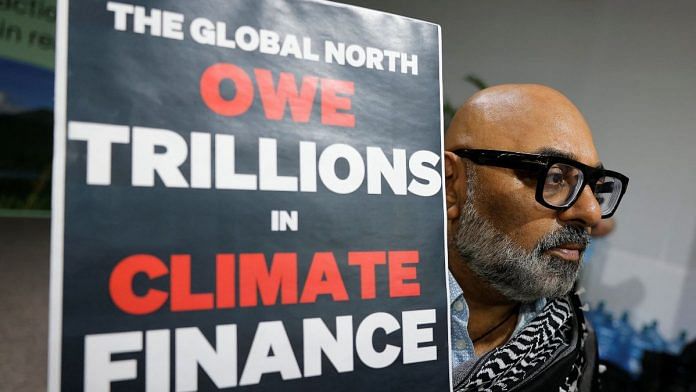
New Delhi: In a win for India, G77+China, the African Group and other developing countries, a new report by the Independent High Level Expert Group (IHLEG) on Climate Finance has echoed the demand for $1 trillion in climate finance for these countries annually. Released Thursday on the sidelines of COP29 in Baku, the report estimates that emerging economies, except China, will require $1 trillion as investment in climate finance for energy transition, adaptation and resilience from international sources. While the actual requirement is closer to $2.
4 trillion per year for these emerging economies, they can manage $1.4 trillion from domestic sources, the report said. The IHLEG report follows a series of demands by developing economies for $1 trillion climate finance as part of the New Collective Quantified Goal (NCQG) that is to be decided by the end of the ongoing COP29 summit.

It began with India first quantifying the number at $1 trillion per year in early 2024, up from the $100 billion a year that developed countries had agreed to in 2009 at COP15 in Copenhagen. Now, as negotiations for NCQG are ongoing in Baku, the G77+China group has already rejected a draft document and have explicitly demanded “at least” $1.3 trillion per year from developed countries to meet their climate action needs.
It projects that the global climate investment requirement by 2030 will be about $6.3 to $6.7 trillion annually, which includes China and developed countries.
Out of this, the emerging markets and developing countries (EMDCs) without China will need $2.4 trillion per year, of which $1 trillion needs to come from international sources. By the IHLEG’s calculations, China just by itself needs $1.
2-1.4 trillion annually for its climate needs, but a large part of it, says the report, can come from domestic sources. The IHLEG was set up back in 2021 at COP26 in Glasgow.
It has submitted reports every year since, during COP27, COP28 and now COP29, to give policy recommendations on climate financing to the United Nations Framework Convention on Climate Change (UNFCCC) leadership. This year’s report has come at a crucial time as COP29 is being called the ‘finance COP’, where a decision on a new finance goal will be viewed as pertinent. “To achieve universal energy access, scalable renewable energy solutions are needed in the Global South.
Creating resilient, affordable and green energy networks, especially for the development of vulnerable communities, is the need of the hour,” Saurabh Kumar, Vice President-India at Global Energy Alliance for People and Planet (GEAPP) told The Print. Also Read: Argentina withdraws from COP29 negotiations at Baku, triggers concerns over Paris Accords’ stability Kumar’s statement is reflective of one of the key recommendations in the IHLEG’s report—to substantially increase investment in renewable energy. The Global South, especially sub-Saharan Africa, which holds 60 percent of the world’s best solar resources yet, saw only two percent of the total renewable energy investment in 2023.
According to the report’s calculations, across all countries, private finance should be the go-to option for clean energy needs, while funds from other climate action needs, like adaptation and climate resilience and infrastructure, can come from domestic/public sources. “Any shortfall in investment before 2030 will place added pressure on the years that follow, creating a steeper and potentially more costly path to climate stability,” reads the report. There are also other ‘innovative’ avenues that the report suggests for securing more capital for climate investment.
These include taxes and levies on international airlines, shipping, and most importantly, fossil fuels. Upholding the ‘polluter pays’ principle, the report says that high-emitting sectors need to be actively taxed to fill the huge climate finance-shaped gap in the world’s economy. IHLEG also recommends ‘South-South’ cooperation between developing countries, like India and Brazil, to ramp up climate finance in these economies.
Also Read: India’s emissions could go up 4.6% by 2024-end, 50% chance world will breach 1.5°C limit by 2030 var ytflag = 0;var myListener = function() {document.
removeEventListener('mousemove', myListener, false);lazyloadmyframes();};document.addEventListener('mousemove', myListener, false);window.addEventListener('scroll', function() {if (ytflag == 0) {lazyloadmyframes();ytflag = 1;}});function lazyloadmyframes() {var ytv = document.
getElementsByClassName("klazyiframe");for (var i = 0; i < ytv.length; i++) {ytv[i].src = ytv[i].
getAttribute('data-src');}} Save my name, email, and website in this browser for the next time I comment. Δ document.getElementById( "ak_js_1" ).
setAttribute( "value", ( new Date() ).getTime() );.














